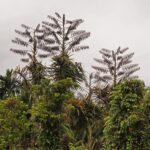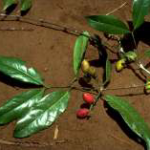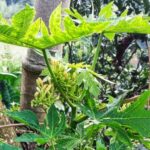Baobab seeds and vine roots are staple foods for remotely living Hadza in Tanzania. This article already presented the collection and preparation of vine roots. In the following, we will discuss how to prepare Baobab seeds and their surrounding dry pulp into Baobab seed porridge, which the Hadza people commonly eat.

Baobab pods and their content
Baobab trees (Adansonia digitata) are widely distributed in Yaeda South in Tanzania, where Hadza people live traditionally. Their fruits are hairy pods containing hard seeds cushioned by a white, spongy, dry pulp.
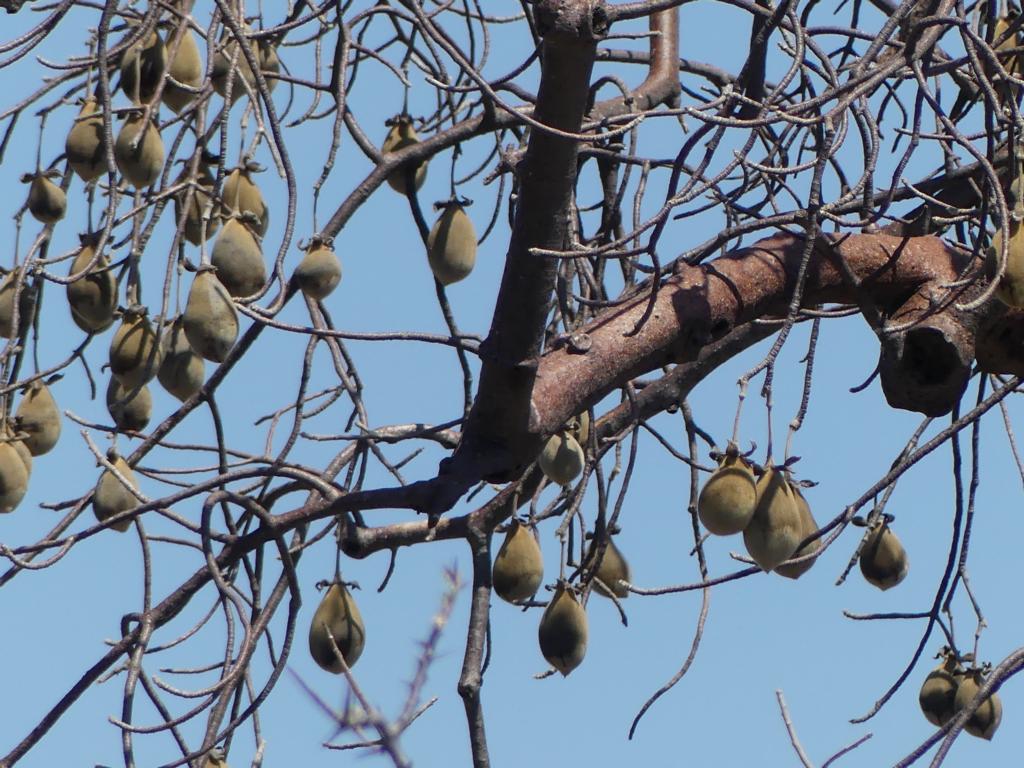
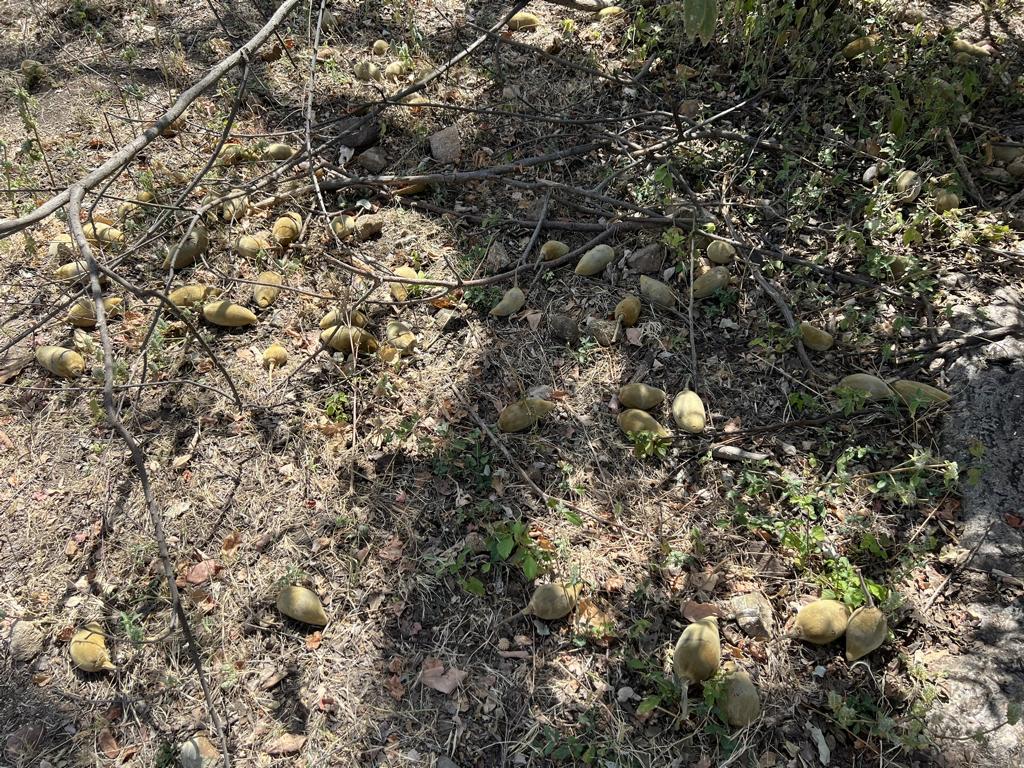
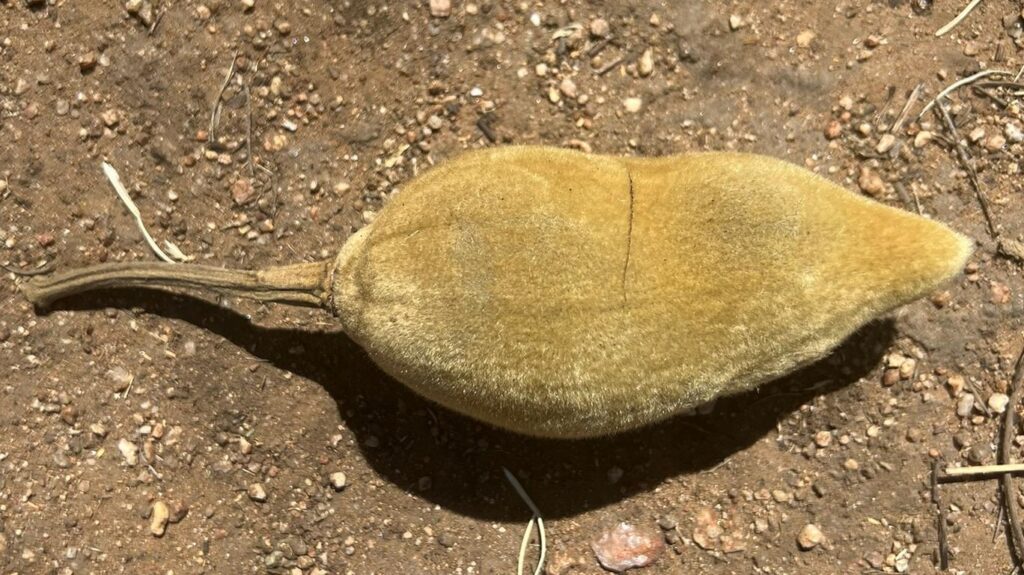
In June 2024, a baobab tree was full of ripe pods, which littered the ground below the tree. Hadza people know the different tastes of every Baobab within their area. They believe that the pods of Baobab trees that fruit already in June are not as tasty as pods from a later ripening time. The primary ripening time is from July to September.
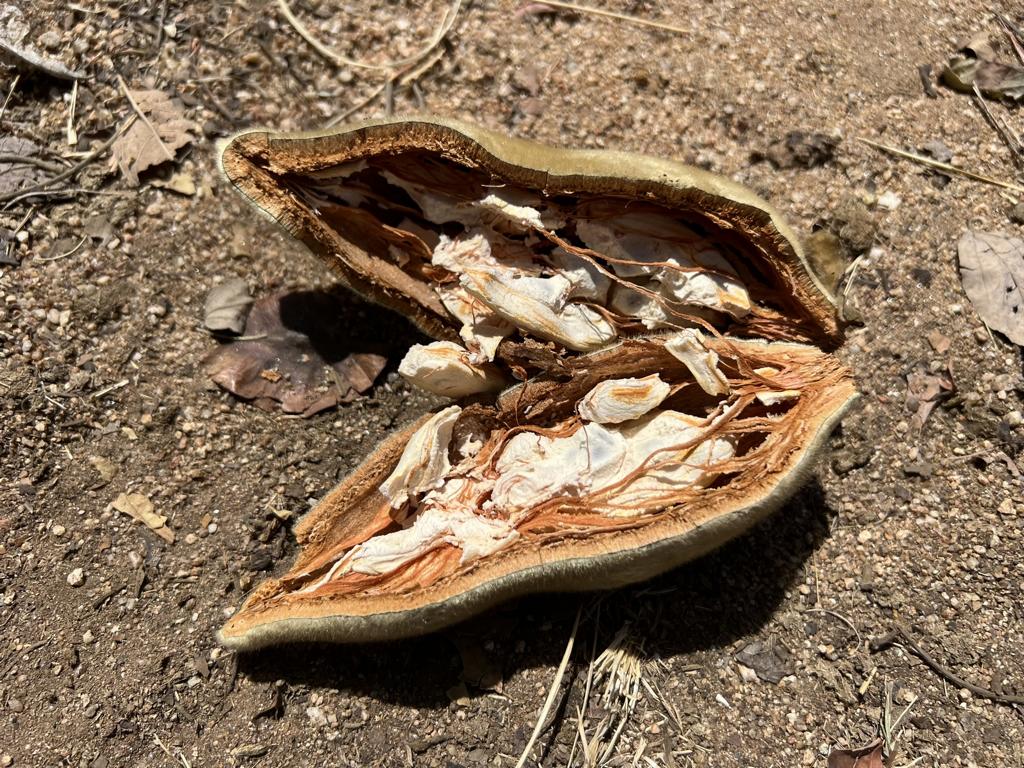
Pods on the ground with cracks will soon be infested with reddish-black-colored bugs. Undamaged Baobab pods are non-perishable and can be stored and used for 10 to 11 months a year.
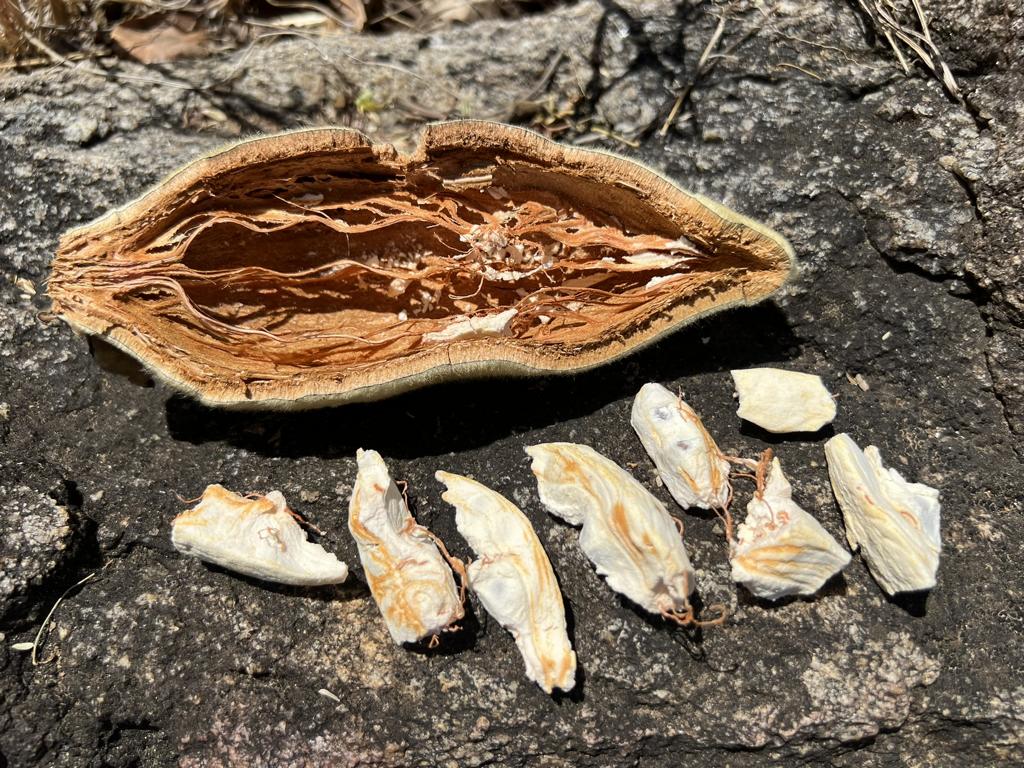
The seeds inside the pod are surrounded by a spongy, dry pulp and kept in place by fibrous and stringy material that can be easily removed.
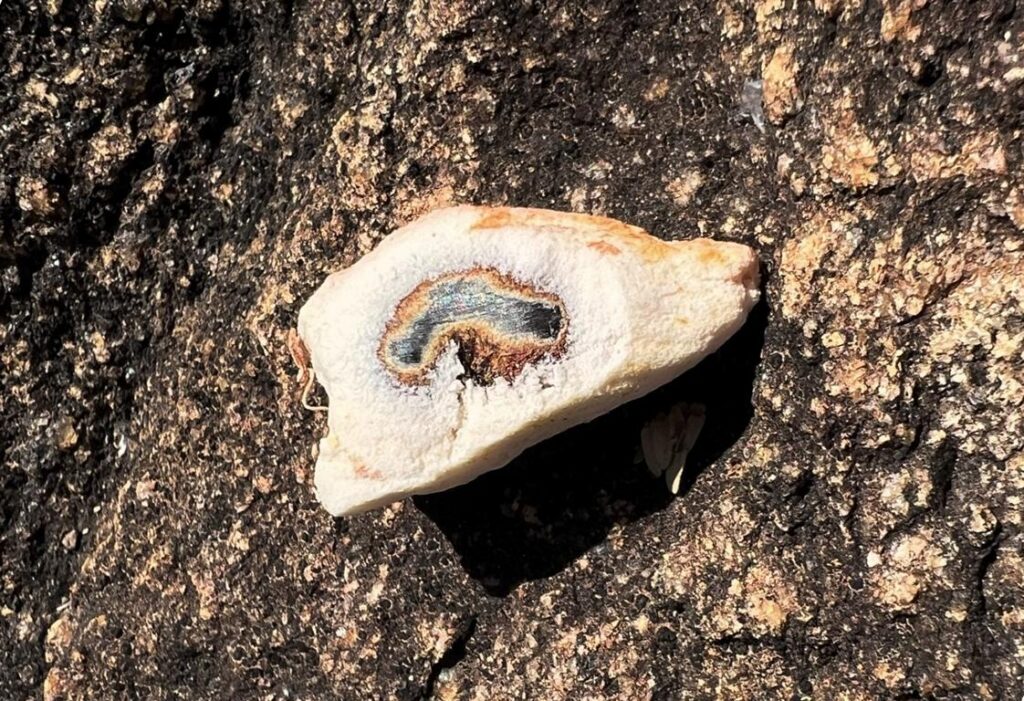
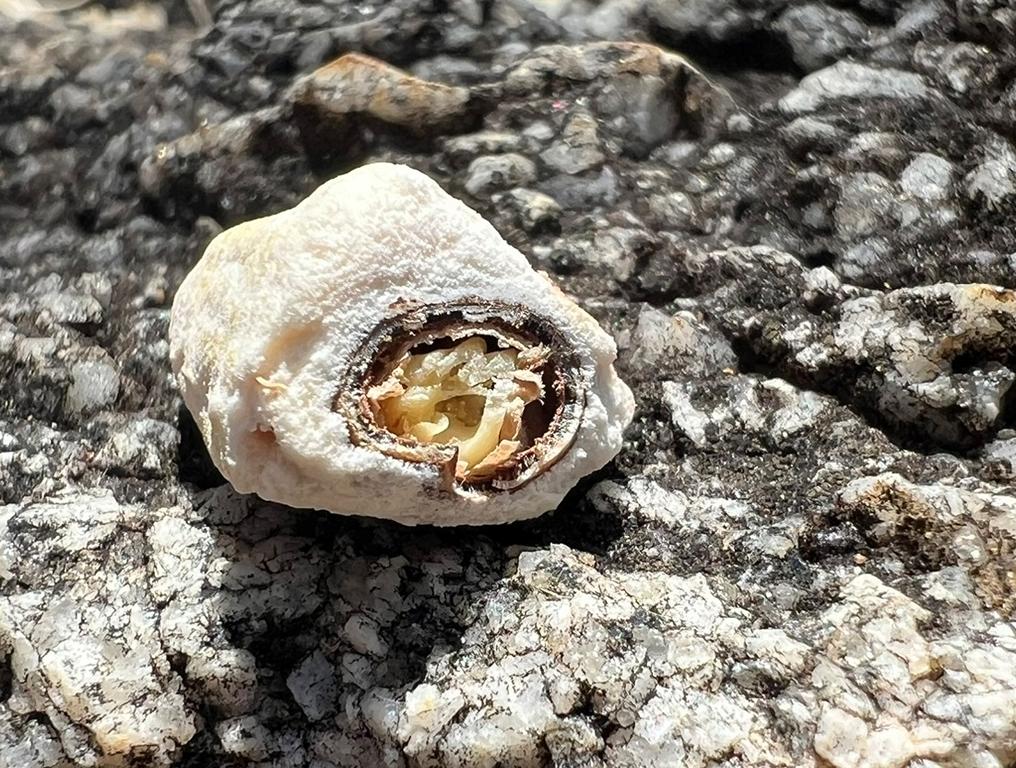
Baobab seeds are kidney-shaped. Their tough outside shell is covered with a corky and woody layer. Inside, there is an oil-rich kernel.
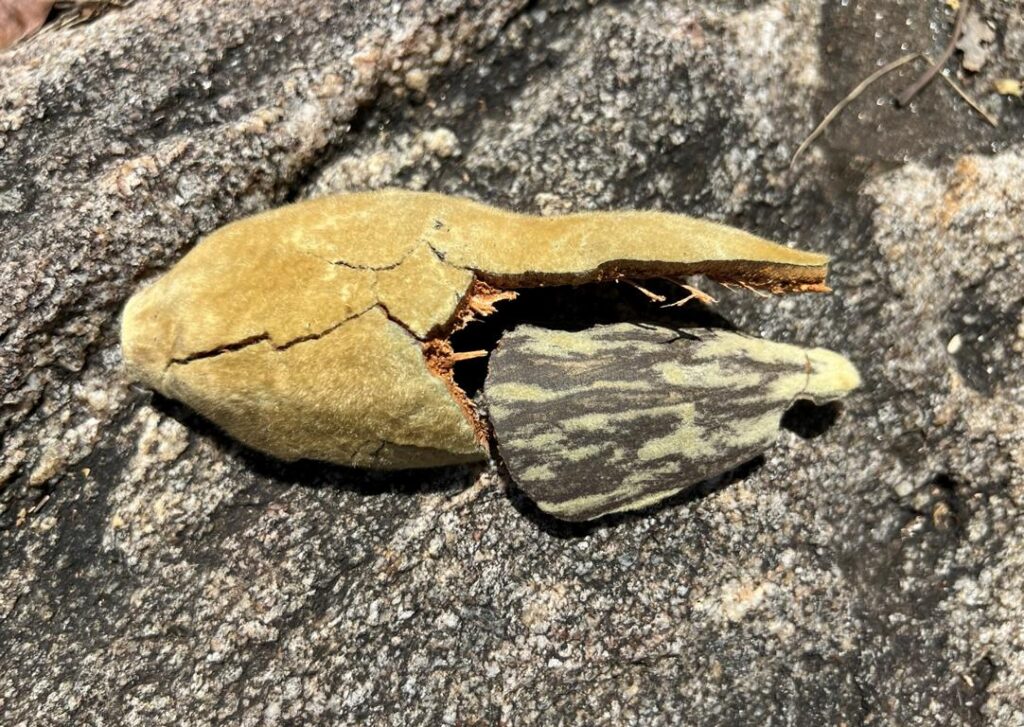
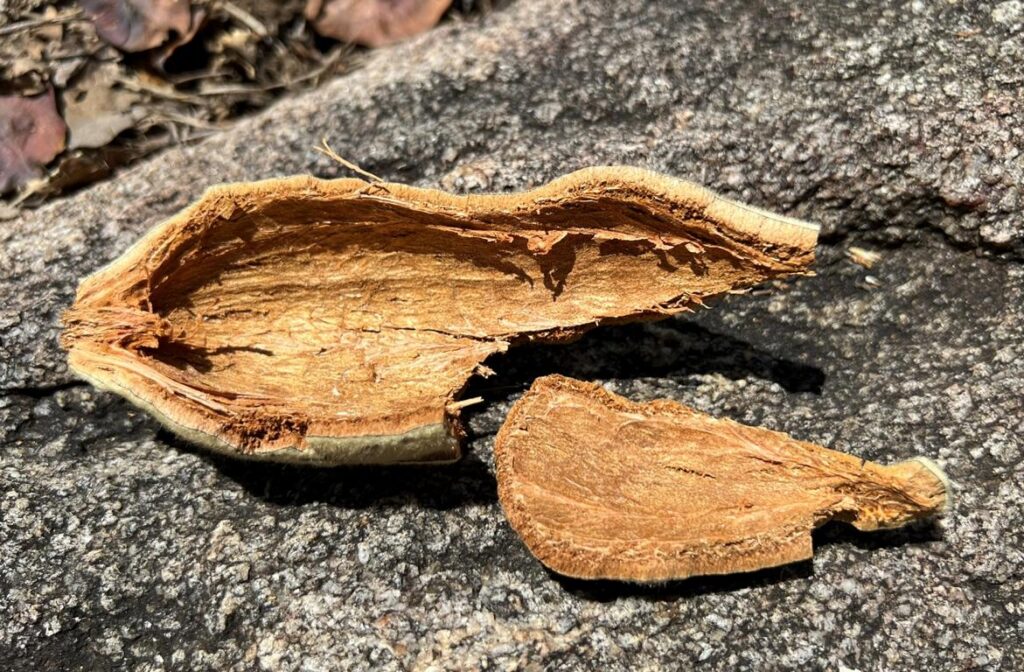
Parts of the shell can be carved into spoons by scraping off the hairy outside layer of the pod. These shell parts are also ideal holders for the ember of a friction fire. Scientists without bushcraft skills were misled by thinking (and describing) these Baobab shells as the bottom piece of the friction fire set-up, which is untrue. These shells are just catching the ember and are not responsible for creating it.
How do Hadza people make the Baobab porridge?
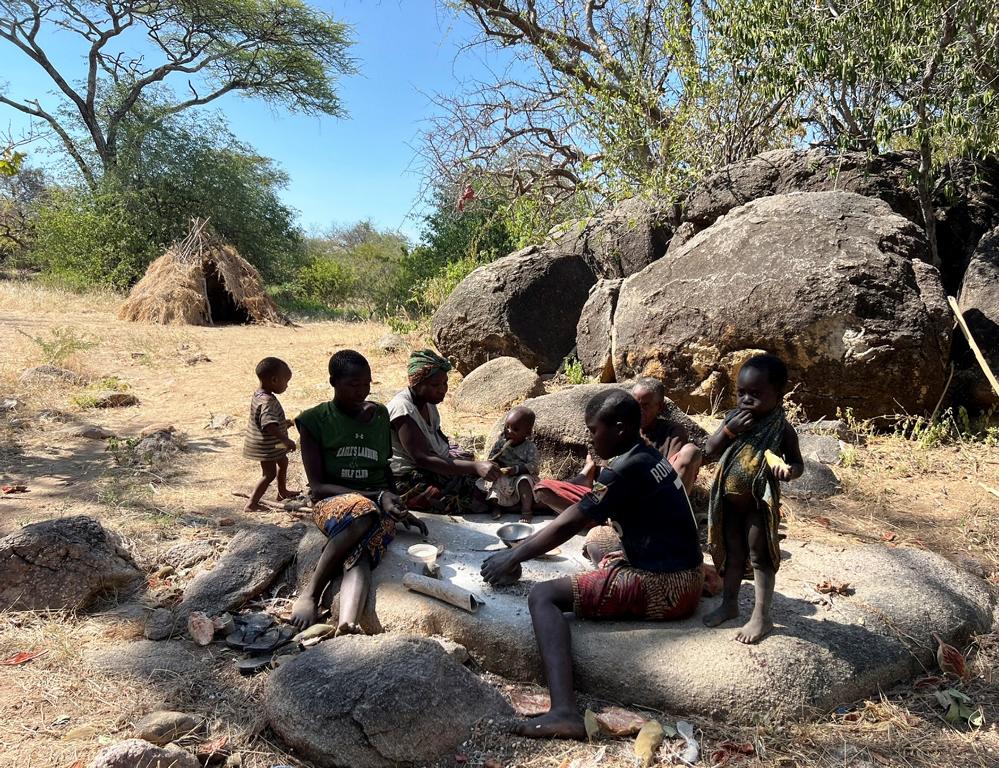
Every assembly of Hadza grass huts (some call it a ‘village’) has a communal area with a big flat rock where the Hadza women meet each other, gossip, and pound Baobab seeds. Preparing Baobab porridge is strictly women’s work, and women of all ages meet there.
Cracking the pods and removing seeds and pulp
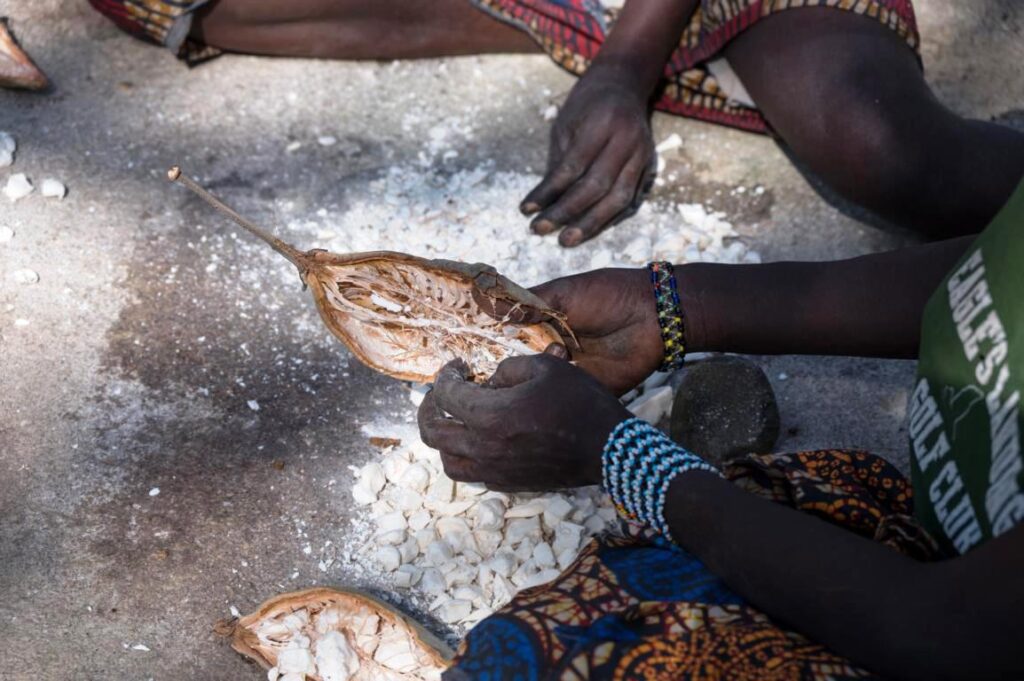
Pounding seeds and pulp
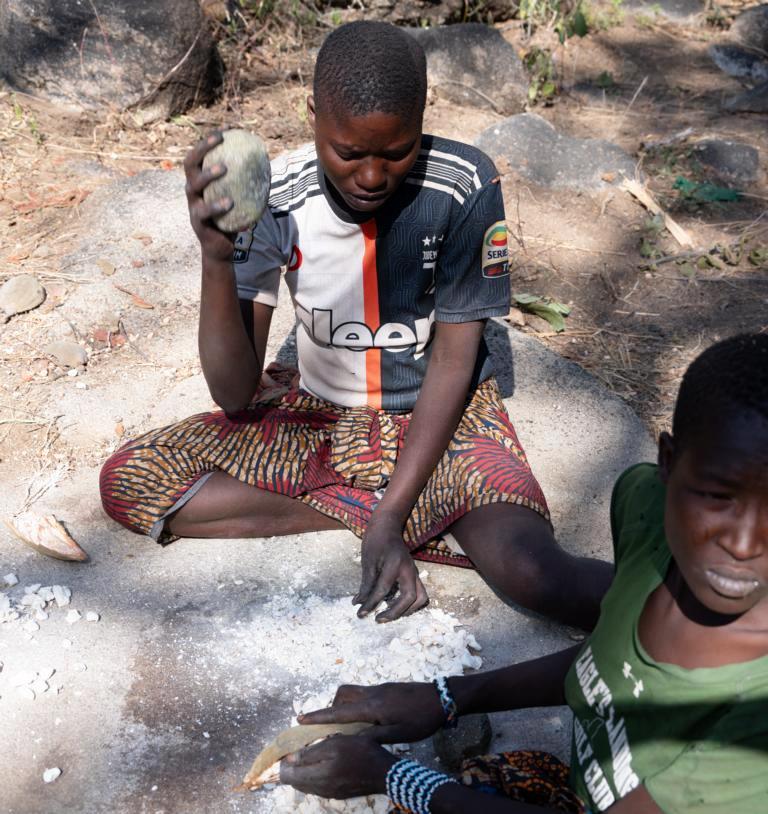
The whole Baobab seeds are smashed with a round stone. That pounding breaks up the hard seed shells. Oily kernels, broken-up shells, and pounded white pulp form one uniform and dry mash.
Winnowing the pounded material
After pounding, the broken-up material consists of various grain sizes. An inclined plane is vertically shaken to separate the larger sizes from the smaller ones. As this mixture of kernels, shells, and pulp is dense, the higher specific weight of the shells is not significant. These shell pieces can not move faster up or downwards, as they are caught in the surrounding flour.
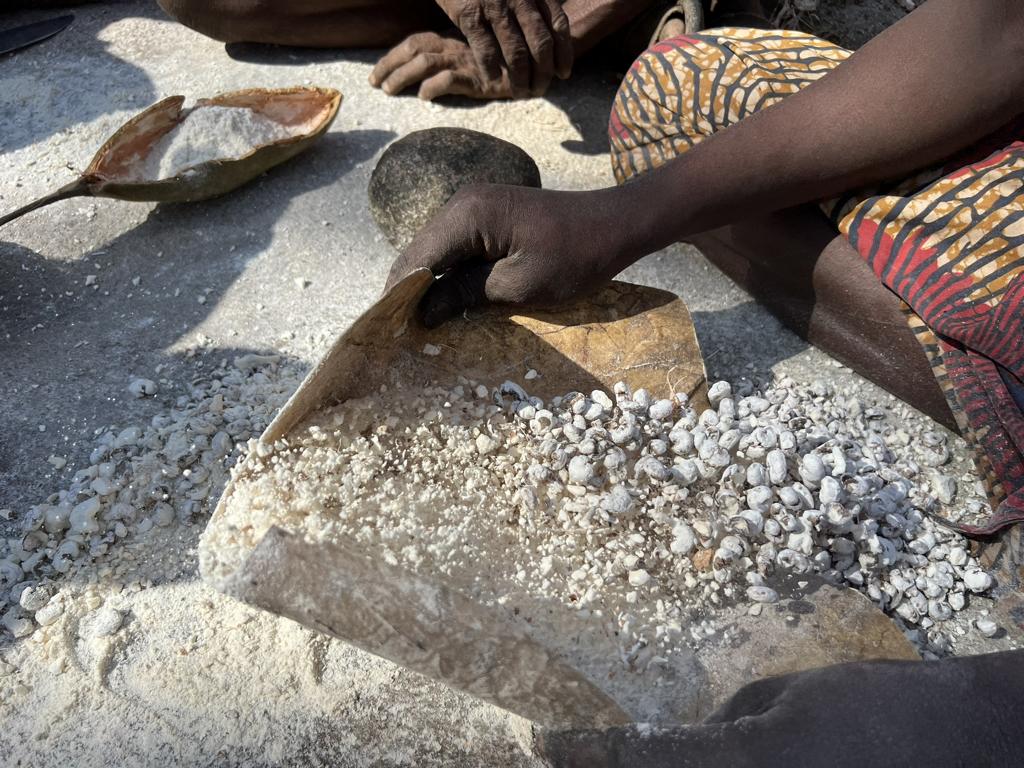
For winnowing, a piece of rawhide is used, which is held and shaken at such an angle that the fine powder is discharged at the upper end. Large grains fall back to the floor and will be pounded again.
Mixing with water and enjoying
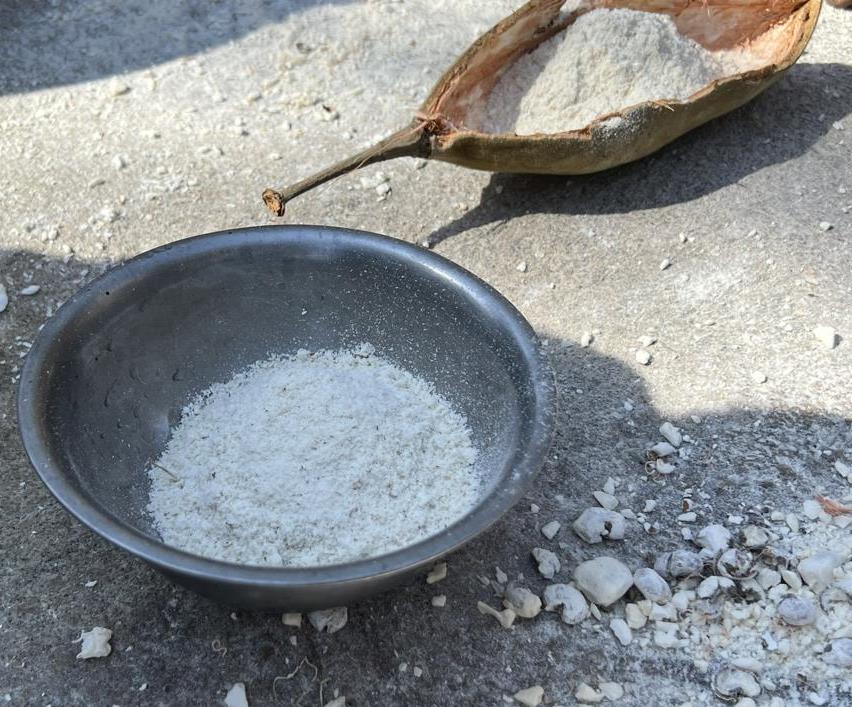
The dry, winnowed powder will be mixed with small amounts of water until a doughy consistency is achieved. And that’s ready to eat.
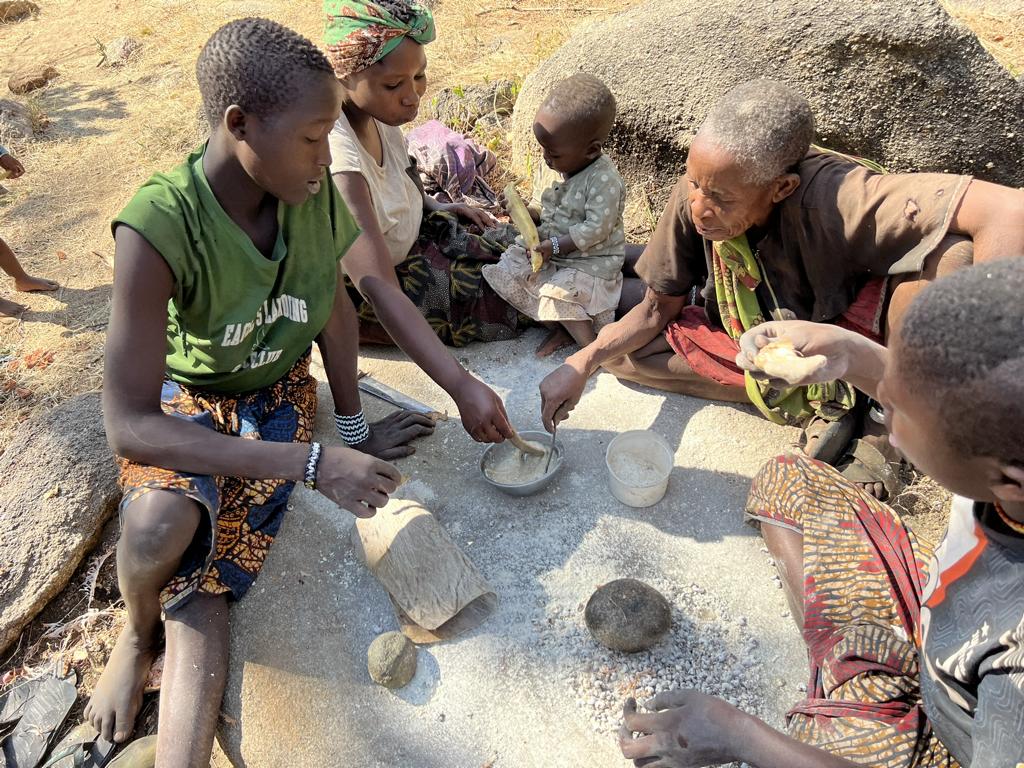
Traditionally, this Baobab porridge is eaten with a Baobab pod spoon out of a cleaned half of such a Baobab pod. However, it must be mentioned that this porridge still contains lots of hard seed shell parts, which are a bit gritty between the teeth.
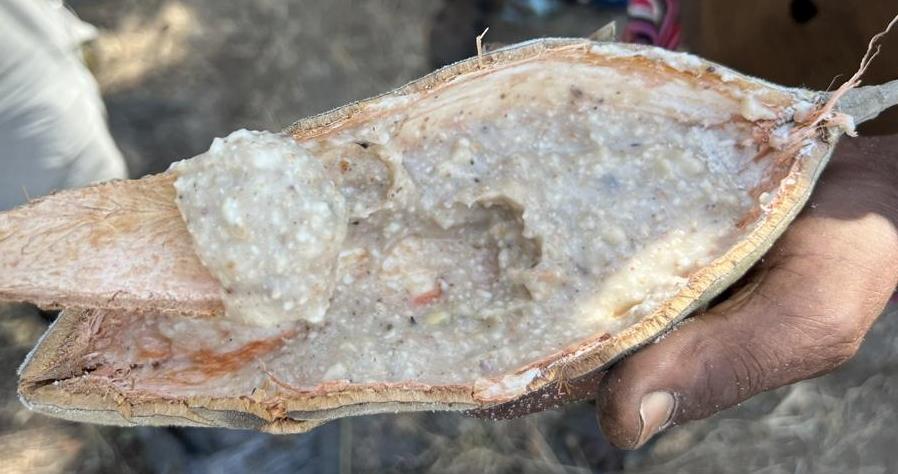
This porridge is highly nutritious and delicious. It is sweetish-sour with a pleasant nutty aroma, and it is addictive. Ground baobab flour can be eaten raw, cooked as porridge, or dried.
Nutritional value of Baobab seeds and pulp
According to this source, the nutritional composition of Baobab Seeds is as follows:
- Moisture contents 5.37%
- Ash contents 7.36%
- Fat contents 24.72%
- Crude fiber 7.89%
- Crude protein 20.13%
- Carbohydrate 39.90%
- Sodium 260 mg /100g
- Potassium 2,500 mg /100g
- Calcium 1.2 mg /100g
- The Energy content of just the kernels within the seeds is 462 kcal/100g, which is high.
According to that source, the pulp around the seeds is rich in vitamin C, potassium, calcium, and magnesium. But it is poor in iron and manganese. Exact figures can be found in this source.
Interestingly, Baobab seeds also contain anti-nutritional properties, like trypsin inhibitors, which have adverse effects on protein utilization, and catechin, also known to be contained in cashew nuts. For detailed information, see the recommended source above.
How to find Baobab seeds in case of abnormally dry weather
In his book ‘Hadzabe – By the Light of a Million Fires’, Daudi Peterson lets a Hadzabe elder describe how they found Baobab seeds under severe dry conditions. This elder stated:
Our greatest competitors for food are baboons. We sing an old song that describes a year when very little rain fell, and when the tubers were thin, dry and shrunken like the people were and the baboons finished the baobab fruits. The song relates how we survived this difficult period by climbing up to the baboon roosts on the rocks to harvest baobab seeds from baboon feces. The seeds were second-hand, but intact and edible, and kept us alive.
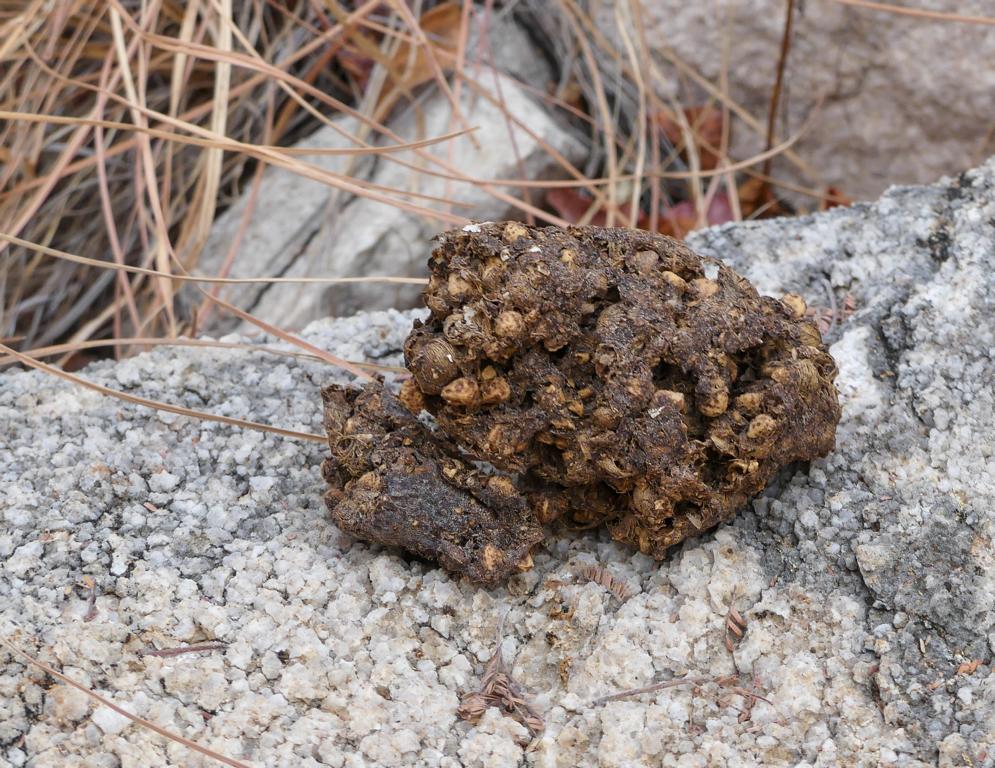
Lessons learned of how Hadza people prepare porridge from Baobab seeds and pods:
- Baobab pods are collected during the main harvesting season, and the uncracked pods are stored for later use.
- When using, the pods will be smashed, and seeds and pulp will be removed.
- Baobab seeds and pulp will be pounded together with stones to create a grainy composition like flour of these ingredients.
- By winnowing, the fine particles will be separated from the coarser ones.
- Mixing the fine particles with water creates a highly delicious porridge.
Additional information
My book ‘Hadzabe Survival Skills‘ offers more skills, knowledge, tools, and techniques for the Hadzabe people’s life in their natural environment. It is available on Amazon.com and Amazon’s regional websites.
.



